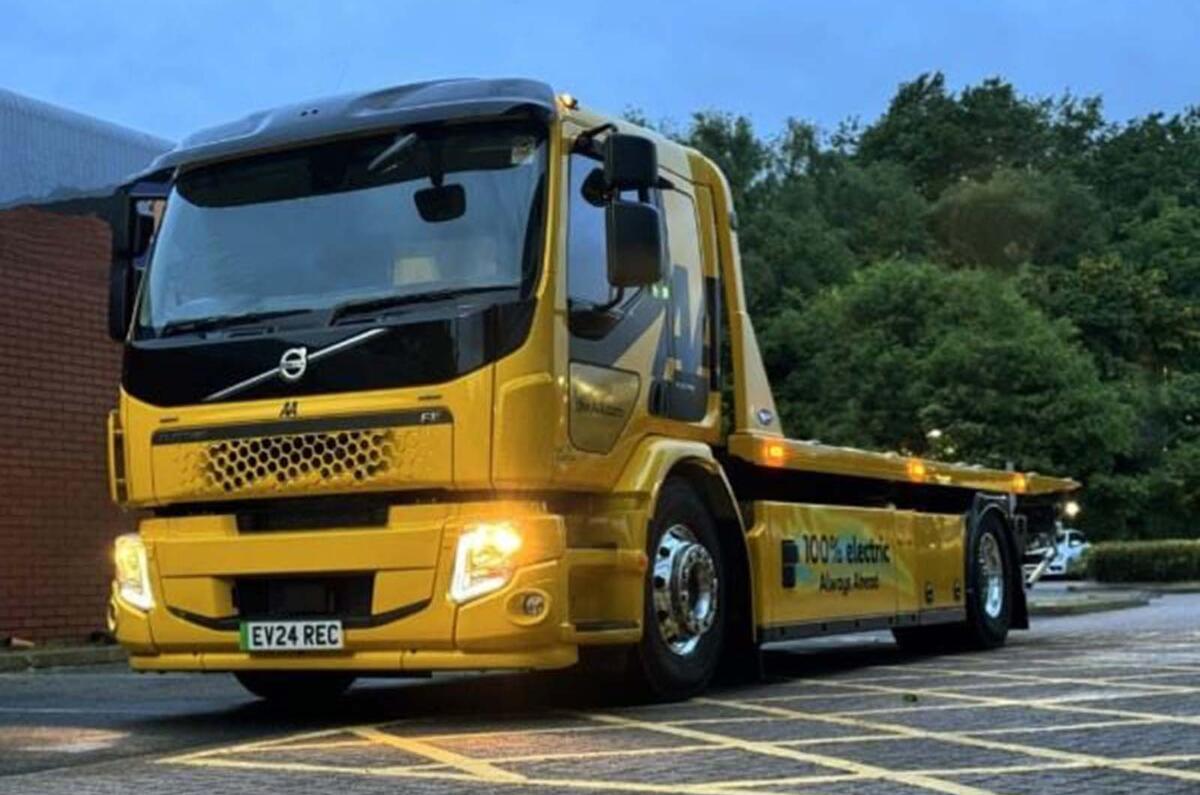The AA has become the first roadside assistance firm to use fully electric vehicles, launching a new fleet of electric vans and trucks to prepare for its transition to net-zero emissions and investigate the use of EVs in “real-life settings”.
Using a “test and scale” approach, the firm will deploy three ‘concept’ battery-electric assistance and recovery vehicles across the country in what it describes as a “pilot shift to low-emissions vehicles”.
The scheme’s largest - and flagship - vehicle is the Volvo FE Boniface Slidebed recovery truck, which is equipped with a ‘very low angle’ (VLA) slidebed that allows for a more gentle approach angle. The powered bed slides backwards so that ramps can be lowered almost level to the ground.
The FE, based on the diesel-powered FE 19T, can carry up to 6000kg on its main recovery bed and up to 2000kg on its second car lift. (The average weight for a new car is nearly 1500kg and 1940kg for an electric car.)
The model’s official range is 170 miles, which is deemed enough by the AA because the truck's deployment will initially be focused in and around London and Birmingham.
Its battery hasn't been fully detailed yet, but the FE is likely to combine four units for a combined capacity of 375kWh. Charging speeds top out at 150kW and a full charge takes 135 minutes.
The second electric vehicle to join the AA fleet is the van-based Iveco eDaily 7.2T Dyson Powerload, which is capable of carrying loads up to 3000kg.
It uses Dyson technology that allows the loading ramps to be deployed remotely. It has a "minimum" range of 100 miles, which is expected to be enough for its use in parts of the country where there are low-emission zones, such as London, Bristol and Oxford.
An 80kW rapid charger will allow the battery to be taken from "a low charge" (usually advertised as around 20%) to full in 48 minutes, which, the AA points out, is similar to an HGV driver’s tachograph break.
The third vehicle is the eDaily CRT Van, which is based on a six-passenger crew van but has been modified to allow the fitment of a CRT unit that the AA adds to vans to allow them to tow up to 3250kg.
It also features a twin-battery set-up that delivers a range of 160 miles, with the same charging times as the Powerload recovery van.
“We’re excited to introduce these groundbreaking vehicles to our ‘test and scale’ approach to fleet decarbonisation,” said Duncan Webb, the AA’s head of fleet.
As well as helping to decarbonise the AA’s fleet (which currently numbers 3000), the new vehicles are designed to improve comfort levels for staff and customers and will also be used for learning for scale deployment.
To become net zero by 2035, the AA will also undertake structured tests of alternative fuels, such as hydrogenated vegetable oil (HVO), to assess their viability.







Join the debate
Add your comment
A fleet of diesel powered recovery vehicles for broken down electric vehicles sounds good to me.
Your weights need some work rather than averages which are skewed due to expensive large heavier vehicles.
ICE has many more A segment cars compared to EVs.
Let's use GVW and compare some.
Tesla Model 3 (2024) weighs 2192-2255kg (EV)
Audi S4 (2024) is 2325-2380kg
BMW iX (2024) is 3145kg (EV)
LR Range Rover SE (2025) is 3350-3480kg
Volvo EX30 (2024) is 2216-2335kg (EV)
VW Tiguan (2024) is 2260-2500kg
This makes things more interesting